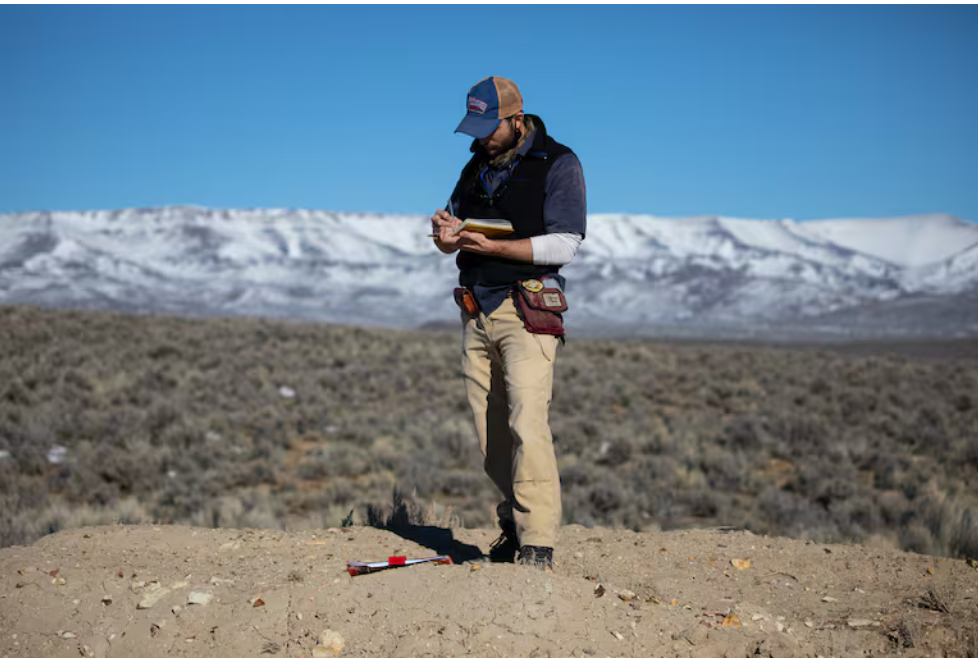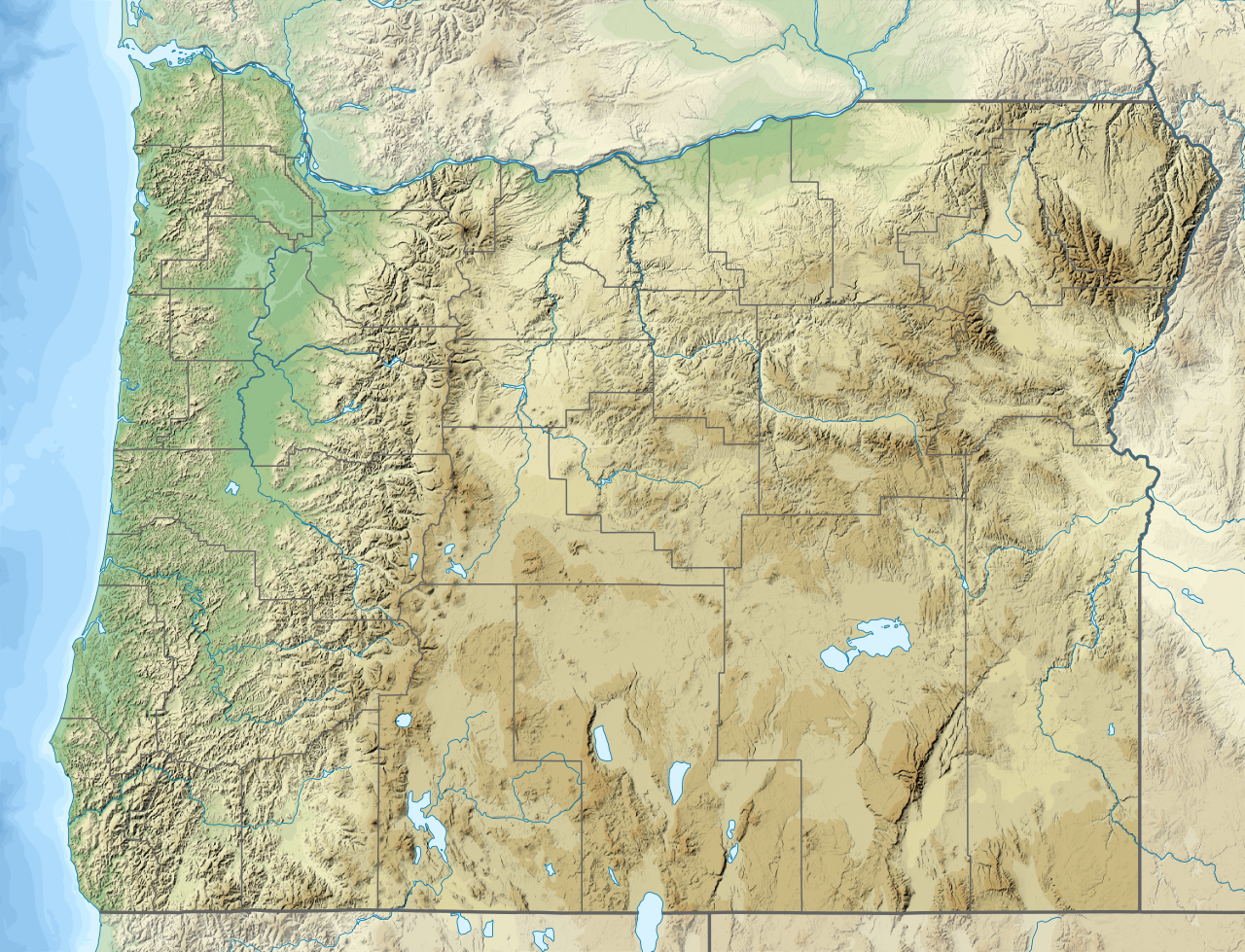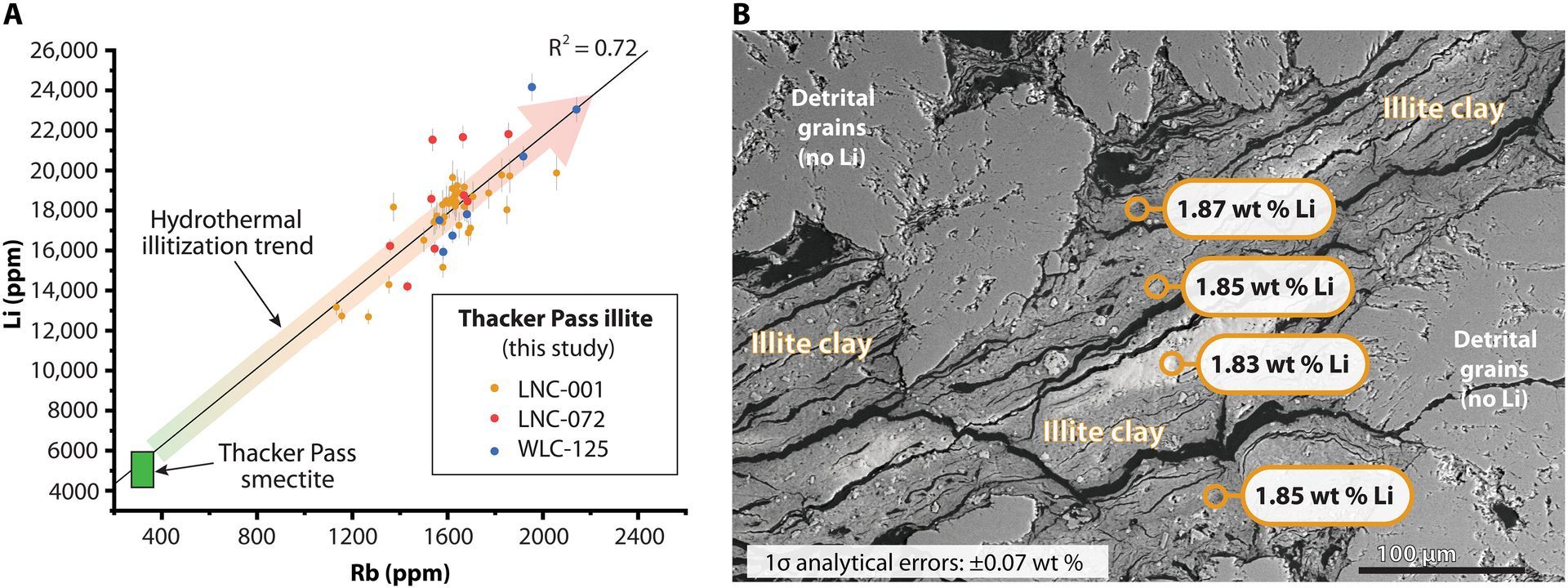World’s Largest Lithium Deposit, McDermitt Caldera sets world record

McDermitt Caldera, Oregon-Nevada border, United States--A giant deposit of lithium may have just been discovered inside an ancient US super-volcano that was formed about 16 million years ago, according to a recent study funded by Lithium Americas, that suggests that there could be 20 million to 40 million metric tons of lithium in a bed of clay that is found throughout the inactive volcano; the new deposit sets the world record for being the World’s Largest Lithium Deposit, according to the WORLD RECORD ACADEMY.

"McDermitt Caldera, straddling the border of Oregon and Nevada, may hold 20 to 40 million metric tons of extractable lithium, which would make it the largest known lithium deposit in the world," the Big Think says.
- The caldera was the site of a massive volcanic eruption roughly 16 million years ago, which spewed lithium-rich magma.
- If the U.S. takes advantage of the monumental lithium deposit held within McDermitt Caldera, it will own a key domestic supply for building out a clean energy economy while simultaneously gaining a strong position in the global market.
"Sraddling the border of Oregon and Nevada rests McDermitt Caldera. Barren and desolate, the crater-like depression pockmarked with crags and scars might seem bland and lifeless to the layperson’s eye, but the real treasure is what lies just below ground. The 616-square-mile region could be home to the world’s largest known lithium deposit.
"Lithium, the soft, light, silvery metal is increasingly ubiquitous these days. That’s because it is integral to the batteries used in laptops, smartphones, electric vehicles, grid storage, and pretty much every portable electronic device. Demand for the element, which these days is often called “white gold,” is forecast to rise to 1.5 million metric tons per year by 2028, a 66% increase over what humanity uses today. From there, it’s likely to rise even further and faster."

"The world's largest deposit of lithium may have just been discovered inside an ancient US supervolcano that was formed about 16 million years ago, according to a recent study. The potential discovery centers around the McDermitt Caldera on the border of Nevada and Oregon. The new study suggests that there could be 20 million to 40 million metric tons of lithium in a bed of clay that is found throughout the inactive volcano," the Yahoo Finance says.
"The study was funded by Lithium Americas, and even if the McDermitt Caldera does contain the world's largest deposit of lithium, it's still unclear if it would be economically feasible to extract the lithium, which is the main ingredient used in batteries for everything from smartphones to electric vehicles.
"Lithium Americas expects to being mining lithium out of its Thacker Pass mine in 2026, and if the mine proves successful and the deposit is as big as the company believes it could be, it could have massive implications for one of the hottest commodities in the world, as it would help the US become independent in its ongoing hunt for lithium."

"A new report from Lithium Americas Corporation (a mining company), GNS Science, and Oregon State University in the journal Science Advances states that the largest lithium reserve in the world might actually be the McDermitt Caldera, located along the border of Oregon and Nevada," the Popular Mechanics says.
"According to Oregon Public Broadcasting, the same hotspot that now supplies all the volcanic activity at Yellowstone National Park occupied this area of North America. Around 16.4 million years ago, a volcanic explosion that would’ve made the 1980 eruption of Mt. Saint Helens seem quaint rocked the area, and the caldera was filled with alkaline magma rich in sodium, potassium, and lithium.
"The explosion also formed a lake—similar to nearby Crater Lake—which stuck around for hundreds of thousands of years and deposited lithium into claybed soils, according to Chemistry World. This new paper suggests that another bout of volcanism dried out the lakebed and exposed it to a brine of lithium and potassium. At the southernmost rim, a lithium-rich clay known as illite replaced lithium deposits at lower concentrations."

"An estimated 20 to 40 million tonnes of lithium metal lie within a volcanic crater formed around 16 million years ago. This is notably larger than the lithium deposits found beneath a Bolivian salt flat, previously considered the largest deposit in the world.
"New in situ analysis reveals that an unusual claystone, composed of the mineral illite, contains 1.3% to 2.4% of lithium in the volcanic crater. This is almost double the lithium present in the main lithium-bearing clay mineral, magnesium smectite, which is more common than illite," the Chemistry World says.
"Some unusual conditions created what could be a uniquely rich volcanic deposit. The crater – the McDermitt caldera – formed 16.4 million years ago when around 1000km3 of magma exploded outwards. The caldera was filled with erupted products of an alkaline magma rich in sodium and potassium, as well as lithium, chlorine and boron. This quickly cooled to form a finely crystalline glassy volcanic rock, ignimbrite, which weathered to produce lithium-rich particles."
"Geologists believe they have uncovered the world’s largest lithium deposit within an ancient supervolcano straddling the Nevada-Oregon border. Up to 40 million metric tons of the precious metal — worth about $1.5 trillion — have been identified throughout a 28-mile-long stretch of the McDermitt Caldera," the
Straight Arrow News says.
"To put this discovery into perspective, if those estimates hold true, it could account for nearly half of the world’s total known lithium reserves, and would nearly double the lithium reserves found in Bolivia’s salt flats, which previously held the record for the world’s largest deposit.
"Often referred to as “white gold,” experts predict that by 2050, the demand for lithium will reach over 10 times more than current annual production levels. The continually increasing need for more lithium globally has even led some analysts to predict that the world could be facing a shortage of the metal by as early as 2025."
"A deposit of lithium recently discovered along the Nevada-Oregon border may be among the world’s largest, having potentially huge implications for the transition to electric vehicles. Volcanologists and geologists from Lithium Americas Corporation, GNS Science, and Oregon State University reported their findings in a paper for Science Advances, published August 31," the Fox Business says.
"The deposit exists in the McDermitt Caldera, a caldera approximately 28 miles long and 22 miles wide. It is believed that the caldera contains around 20 to 40 million metric tons of lithium – a figure that would dwarf deposits in Chile and Australia.
"Globally, lithium output is on track to triple over the next decade, but demand for electric SUVs, sports cars, and sedans threatens to exceed supply. Each battery requires about 17 pounds of lithium, plus cobalt, nickel and other metals."
"Geologists have uncovered what they believe could be the world's largest lithium deposit inside an ancient supervolcano along the Nevada-Oregon border in the US. Clay containing up to 40 million metric tons of the precious metal was identified throughout the 28-mile-long McDermitt Caldera - nearly double what has been found in Bolivia's salt flats that have long held the record for the most lithium deposits," the Daily Mail Online says.
"As of 2022, the average battery-grade lithium carbonate price was $37,000 per metric ton, meaning the volcano is potentially sitting on $1.48 trillion worth of the precious metal.
"Canada-based Lithium Americas Corporation plans to begin mining as early as 2026, mine the region for the next 40 years, and then backfill the pit. However, the plan has been criticized due to the environmental impact of mining and claims that the site is on sacred Native American land."
"The McDermitt Caldera is a large, oval-shaped caldera west of McDermitt in southeastern Oregon and northern Nevada in the United States. It is about 28 miles (45 km) long north–south and 22 miles (35 km) wide east–west. The western part of the caldera is in the Trout Creek Mountains, and the northern part is in the Oregon Canyon Mountains. The highest point of the McDermitt Caldera is Jordan Meadow Mountain at 6,816 feet (2,078 m), which is part of the Montana Mountains of Humboldt County, Nevada,"
Wikipedia says.
"McDermitt Caldera is possibly the oldest of a sequence of calderas formed by the Yellowstone hotspot.[6] The caldera was preceded by a lava dome that had been built by volcanic eruptions of rhyolite starting about 19 million years ago.[3][4] This lava dome collapsed into a caldera in an eruption between 16.37 and 16.41 million years ago.[ A lake subsequently formed in the caldera, and it deposited varved sediments, diatomite, opal, carbonaceous material, and mafic lavas.
"Significant ore deposits are buried in the caldera, including mercury and uranium, which were mined at more than eight sites in the caldera during the 20th century. Mercury at these mines was extracted in large amounts, and it came mostly from cinnabar.[3][8] The McDermitt Mine, located on the eastern edge of the caldera in Nevada, was the last active mercury mine in the United States before it shut down in 1992. Uranium was discovered in the caldera in 1953, and it was extracted mainly from a rhyolite brecciated fault zone at the Moonlight mine on the caldera's southwestern edge. The uranium ore minerals include uraninite and coffinite. The age of the uranium formation is assumed to be the same as the caldera tuff, which is approximately 16.1 million years. Other deposits in the caldera contain ores of antimony, cesium, and lithium (potentially, one of the biggest mines in the world)."
"Chief among volcano sedimentary resources are the clay-rich lacustrine sediments deposited within the middle-Miocene McDermitt caldera, located along the Nevada-Oregon border on the northwestern edge of the Basin and Range province, USA (4–9). To date, 5.1 MT of Li have been reported as Canadian and Australian reporting code-compliant Measured and Indicated Resource estimates at the Lithium Americas Corp. Thacker Pass project (3.0 MT of Li) and the Jindalee Resources Ltd. McDermitt project (2.1 MT of Li) obtained through extensive drilling, resource, and economic modeling (10, 11)," the Science Advances says.
"Recent calculations by Castor and Henry (8) estimate an in situ tonnage of ~20 to 40 MT of Li (maximum 120 MT of Li) to be contained within sediments of the whole McDermitt caldera. This back-of-the-envelope estimation is calculated using caldera-wide extrapolation of publicly available drill hole data from Lithium Americas Corp. and Jindalee Resources Ltd. and is not a reporting code-compliant mineral resource estimate that considers economic viability.
"Even if this estimation is high due to variations in sediment thickness and/or Li grade, the Li inventory contained in McDermitt caldera sediments would still be on par with, if not considerably larger than, the 10.2 MT of Li inventory estimated to be contained in brines beneath the Salar de Uyuni in Bolivia (12), previously considered the largest Li deposit on Earth."
Photos: World’s Largest Lithium Deposit, McDermitt Caldera sets world record
(1) Sammy Castonguay writes field notes on a trip to the McDermitt Caldera. “This feature we’re talking about and waving our arms around is 16 million years old,” Castonguay said. “And we’re about to make decisions in five, 10 years about this thing. That’s a blink of an eye in geologic time.” Photo: Bradley W. Parks /OPB
(2) Simplified map of McDermitt Caldera, locations of active and historic mining projects, locations of drillholes colored according to maximum downhole Li assay value, and locations of drillhole samples used in this study. Geology modified from (20). (B) Representative drillhole WLC-043 from the Thacker Pass project. Downhole whole-rock Li values (ppm) are shown in black circles and indicated on upper x axis. Clay (001) d-spacing values (angstroms) are shown in red squares and indicated on lower x-axis. Li concentrations increase with decreasing clay (001) d-spacing, demonstrating that the higher grades are associated with the illite clays. Drillhole data from (8, 10, 11, 28, 29) and previously unreleased Lithium Americas Corp. drilling./Science Advances
(4) Concentration of Li and Rb from three drillhole samples at Thacker Pass compared to composition of Thacker Pass smectite. The linear best-fit regression line through the illite data (black line) has a slope of 10.8 (equivalent to a Li:Rb molar ratio of ~120:1) and intersects the range of Li and Rb concentrations of clay concentrates from Thacker Pass smectite (14). (B) Merged cathodoluminescent backscatter image of illite from LNC-001 with locations of spot analyses shown. Photo: Science Advances
(5) Disaster Peak, left, punctuates the northwest rim of the McDermitt Caldera in southeast Oregon, Jan. 14, 2022. The historic lakebed in the foreground contains some of the highest concentrations of lithium in the United States.
Bradley W. Parks / OPB

